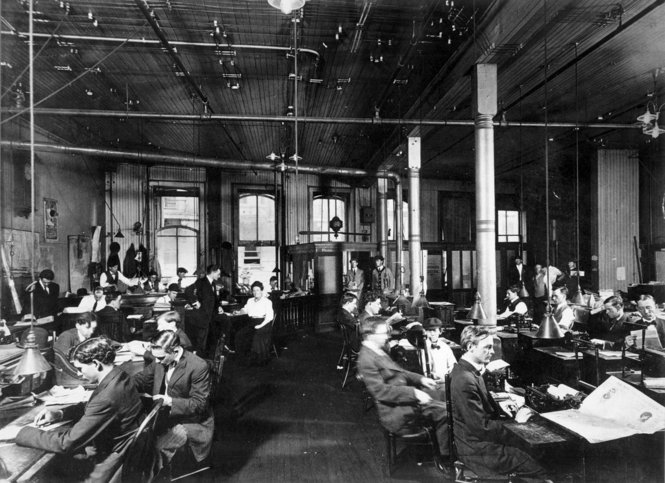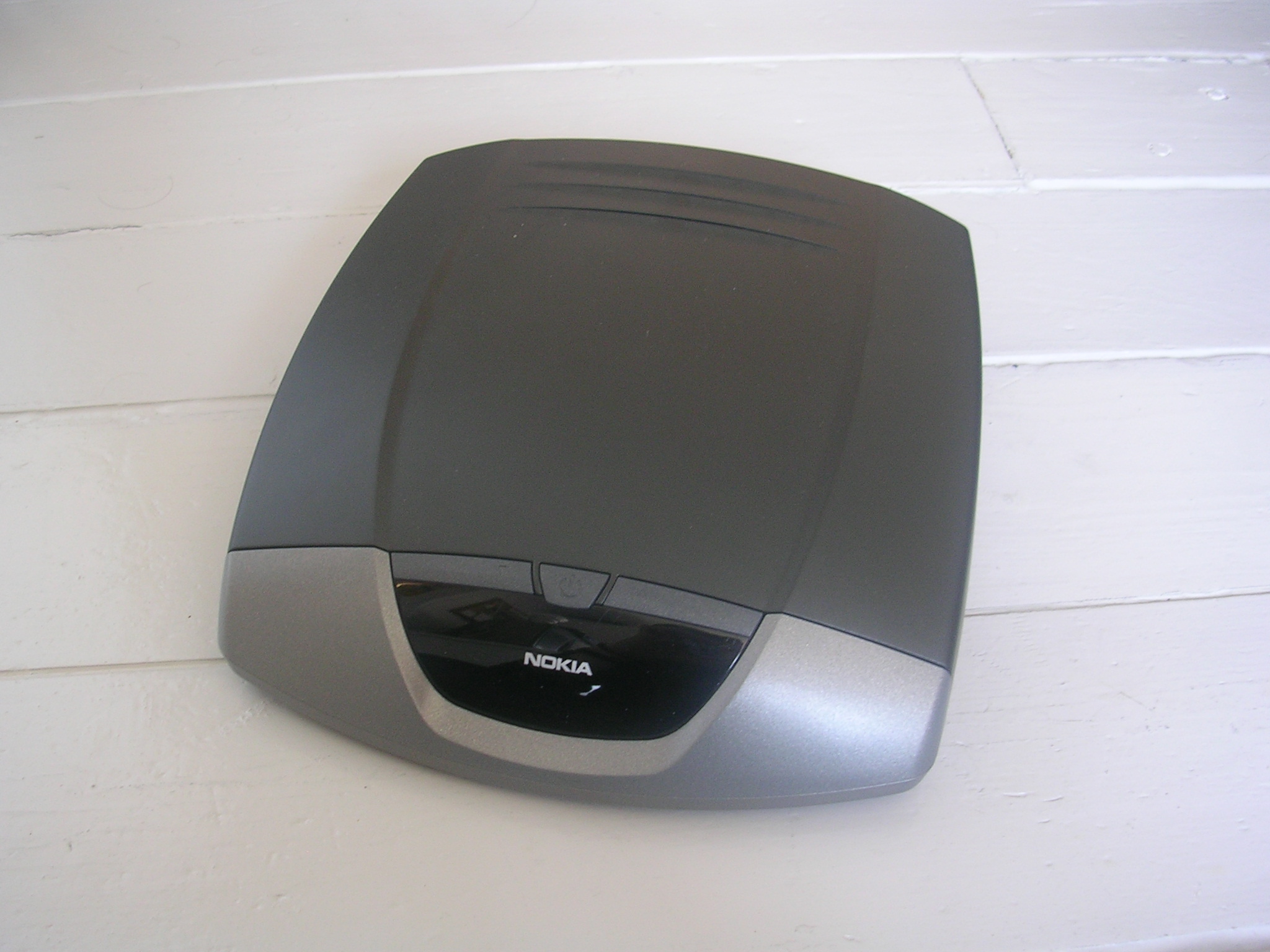|
Media Object Server
The Media Object Server (MOS) protocol allows newsroom computer systems (NCS) to communicate using a standard protocol with video servers, sound server, audio servers, Movie stills photographer, still stores, and character generators for Broadcasting, broadcast production. The MOS protocol is based on XML. It enables the exchange of the following types of messages: ; Descriptive Data for Media Objects. : The MOS "pushes" descriptive information and pointers to the NCS as objects are created, modified, or deleted in the MOS. This allows the NCS to be "aware" of the contents of the MOS and enables the NCS to perform searches on and manipulate the data the MOS has sent. ; Playlist Exchange. : The NCS can build and transfer playlist information to the MOS. This allows the NCS to control the sequence that media objects are played or presented by the MOS. ; Status Exchange. : The MOS can inform the NCS of the status of specific clips or the MOS system in general. The NCS can notify the ... [...More Info...] [...Related Items...] OR: [Wikipedia] [Google] [Baidu] |
Newsroom
A newsroom is the central place where journalists—reporters, editors, and producers, associate producers, news anchors, news designers, photojournalists, videojournalists, associate editor, residence editor, visual text editor, Desk Head, stringers along with other staffers—work to gather news to be published in a newspaper, an online newspaper or magazine, or broadcast on radio, television, or cable. Some journalism organizations refer to the newsroom as the city room. Print publication newsrooms In a print publication's newsroom, reporters sit at desks, gather information, and write articles or stories, in the past on typewriters, in the 1970s sometimes on specialized terminals, then after the early 1980s on personal computers or workstations. These stories are submitted to editors, who usually sit together at one large desk, where the stories are reviewed and possibly rewritten. Reporters generally used the inverted pyramid method for writing their stories, alth ... [...More Info...] [...Related Items...] OR: [Wikipedia] [Google] [Baidu] |
Content Management System
A content management system (CMS) is computer software used to manage the creation and modification of digital content ( content management).''Managing Enterprise Content: A Unified Content Strategy''. Ann Rockley, Pamela Kostur, Steve Manning. New Riders, 2003. A CMS is typically used for enterprise content management (ECM) and web content management (WCM). ECM typically supports multiple users in a collaborative environment by integrating document management, digital asset management, and record retention. Alternatively, WCM is the collaborative authoring for websites and may include text and embed graphics, photos, video, audio, maps, and program code that display content and interact with the user. ECM typically includes a WCM function. Structure A CMS typically has two major components: a content management application (CMA), as the front-end user interface that allows a user, even with limited expertise, to add, modify, and remove content from a website without the i ... [...More Info...] [...Related Items...] OR: [Wikipedia] [Google] [Baidu] |
JavaScript
JavaScript (), often abbreviated as JS, is a programming language that is one of the core technologies of the World Wide Web, alongside HTML and CSS. As of 2022, 98% of Website, websites use JavaScript on the Client (computing), client side for Web page, webpage behavior, often incorporating third-party Library (computing), libraries. All major Web browser, web browsers have a dedicated JavaScript engine to execute the Source code, code on User (computing), users' devices. JavaScript is a High-level programming language, high-level, often Just-in-time compilation, just-in-time compiled language that conforms to the ECMAScript standard. It has dynamic typing, Prototype-based programming, prototype-based object-oriented programming, object-orientation, and first-class functions. It is Programming paradigm, multi-paradigm, supporting Event-driven programming, event-driven, functional programming, functional, and imperative programming, imperative programming paradigm, programmin ... [...More Info...] [...Related Items...] OR: [Wikipedia] [Google] [Baidu] |
Microsoft TypeScript
TypeScript is a free and open source programming language developed and maintained by Microsoft. It is a strict syntactical superset of JavaScript and adds optional static typing to the language. It is designed for the development of large applications and transpiles to JavaScript. As it is a superset of JavaScript, existing JavaScript programs are also valid TypeScript programs. TypeScript may be used to develop JavaScript applications for both client-side and server-side execution (as with Node.js or Deno). Multiple options are available for transpilation. The default TypeScript Compiler can be used, or the Babel compiler can be invoked to convert TypeScript to JavaScript. TypeScript supports definition files that can contain type information of existing JavaScript libraries, much like C++ header files can describe the structure of existing object files. This enables other programs to use the values defined in the files as if they were statically typed TypeScrip ... [...More Info...] [...Related Items...] OR: [Wikipedia] [Google] [Baidu] |
Java (programming Language)
Java is a high-level, class-based, object-oriented programming language that is designed to have as few implementation dependencies as possible. It is a general-purpose programming language intended to let programmers ''write once, run anywhere'' ( WORA), meaning that compiled Java code can run on all platforms that support Java without the need to recompile. Java applications are typically compiled to bytecode that can run on any Java virtual machine (JVM) regardless of the underlying computer architecture. The syntax of Java is similar to C and C++, but has fewer low-level facilities than either of them. The Java runtime provides dynamic capabilities (such as reflection and runtime code modification) that are typically not available in traditional compiled languages. , Java was one of the most popular programming languages in use according to GitHub, particularly for client–server web applications, with a reported 9 million developers. Java was originally de ... [...More Info...] [...Related Items...] OR: [Wikipedia] [Google] [Baidu] |
Network Device Interface
Network Device Interface (NDI) is a royalty-free software specification developed by NewTek to enable video-compatible products to communicate, deliver, and receive high-definition video over a computer network in a high-quality, low-latency manner that is frame accurate and suitable for switching in a live production environment. Technology NDI is designed to run over gigabit Ethernet, with the NDI codec expected to deliver 1080i HD video at VBR data rates typically around 100 Mbit/s. By default, NDI uses the mDNS (Bonjour / Zeroconf) discovery mechanism to advertise sources on a local area network, such that NDI receiving devices can automatically discover and offer those sources, although 2 other discovery modes (NDI Access, NDI Discovery Server) allow for operations across subnets, and without mDNS. Sources are created using an arbitrarily selected TCP port from a range of ports on the NDI send host. When a source is requested, a TCP connection is established on the ... [...More Info...] [...Related Items...] OR: [Wikipedia] [Google] [Baidu] |
Network Socket
A network socket is a software structure within a network node of a computer network that serves as an endpoint for sending and receiving data across the network. The structure and properties of a socket are defined by an application programming interface (API) for the networking architecture. Sockets are created only during the lifetime of a process of an application running in the node. Because of the standardization of the TCP/IP protocols in the development of the Internet, the term ''network socket'' is most commonly used in the context of the Internet protocol suite, and is therefore often also referred to as Internet socket. In this context, a socket is externally identified to other hosts by its socket address, which is the triad of transport protocol, IP address, and port number. The term ''socket'' is also used for the software endpoint of node-internal inter-process communication (IPC), which often uses the same API as a network socket. Use The use of the ter ... [...More Info...] [...Related Items...] OR: [Wikipedia] [Google] [Baidu] |
Motion Graphics
Motion graphics (sometimes mograph) are pieces of animation or digital footage which create the illusion of motion or rotation, and are usually combined with audio for use in multimedia projects. Motion graphics are usually displayed via electronic media technology, but may also be displayed via manual powered technology (e.g. thaumatrope, phenakistoscope, stroboscope, zoetrope, praxinoscope, flip book). The term distinguishes static graphics from those with a transforming appearance over time, without over-specifying the form. While any form of experimental or abstract animation can be called motion graphics, the term typically more explicitly refers to the commercial application of animation and effects to video, film, TV, and interactive applications. History of the term Since there is no universally accepted definition of motion graphics, the official beginning of the art form is disputed. There have been presentations that could be classified as motion graphics as early ... [...More Info...] [...Related Items...] OR: [Wikipedia] [Google] [Baidu] |
Electronic Field Production
Electronic field production (EFP) is a television industry term referring to a video production which takes place in the field, outside of a formal television studio, in a practical location or special venue. ZettlHerbert Zettl, ''Television Production Handbook'', 12th Ed. defines EFP as using "both ENG (electronic news gathering) and studio techniques. From ENG it borrows its mobility and flexibility; from the studio it borrows its production care and quality control. EFP takes place on location (which may include shooting in someone's living room) and has to adapt to the location conditions... Good lighting and audio are always difficult to achieve in EFP, regardless of whether you are outdoors or indoors. Compared to ENG, in which you simply respond to a situation, EFP needs careful planning." Typical applications of electronic field production include awards shows, concerts, major interviews for newsmagazine shows like ''Inside Edition'', ''Extra'' and ''Dateline NBC'', larg ... [...More Info...] [...Related Items...] OR: [Wikipedia] [Google] [Baidu] |
Interactive Television
Interactive television is a form of media convergence, adding data services to traditional television technology. It has included on-demand delivery of content, online shopping, and viewer polls. Interactive TV is an example of how new information technology can be integrated vertically into established technologies and commercial structures. History Prior to the development of interactive television, interaction could only be simulated. In the 1950s, there were limited efforts to provide an illusion of interactive experience, most overtly with '' Winky Dink and You'', which encouraged viewers to draw on a vinyl sheet they would attach to a television set. QUBE operated an interactive cable television service in Ohio from 1977 to 1984. An interactive video-on-demand (VOD) television service was proposed in 1986 in Japan, where there were plans to develop an "Integrated Network System" service. It was intended to include various interactive services, including videotelephony, ... [...More Info...] [...Related Items...] OR: [Wikipedia] [Google] [Baidu] |
Web Publishing
A website (also written as a web site) is a collection of web pages and related content that is identified by a common domain name and published on at least one web server. Examples of notable websites are Google, Facebook, Amazon, and Wikipedia. All publicly accessible websites collectively constitute the World Wide Web. There are also private websites that can only be accessed on a private network, such as a company's internal website for its employees. Websites are typically dedicated to a particular topic or purpose, such as news, education, commerce, entertainment or social networking. Hyperlinking between web pages guides the navigation of the site, which often starts with a home page. Users can access websites on a range of devices, including desktops, laptops, tablets, and smartphones. The app used on these devices is called a Web browser. History The World Wide Web (WWW) was created in 1989 by the British CERN computer scientist Tim Berners-Lee. On 30 April 1 ... [...More Info...] [...Related Items...] OR: [Wikipedia] [Google] [Baidu] |



